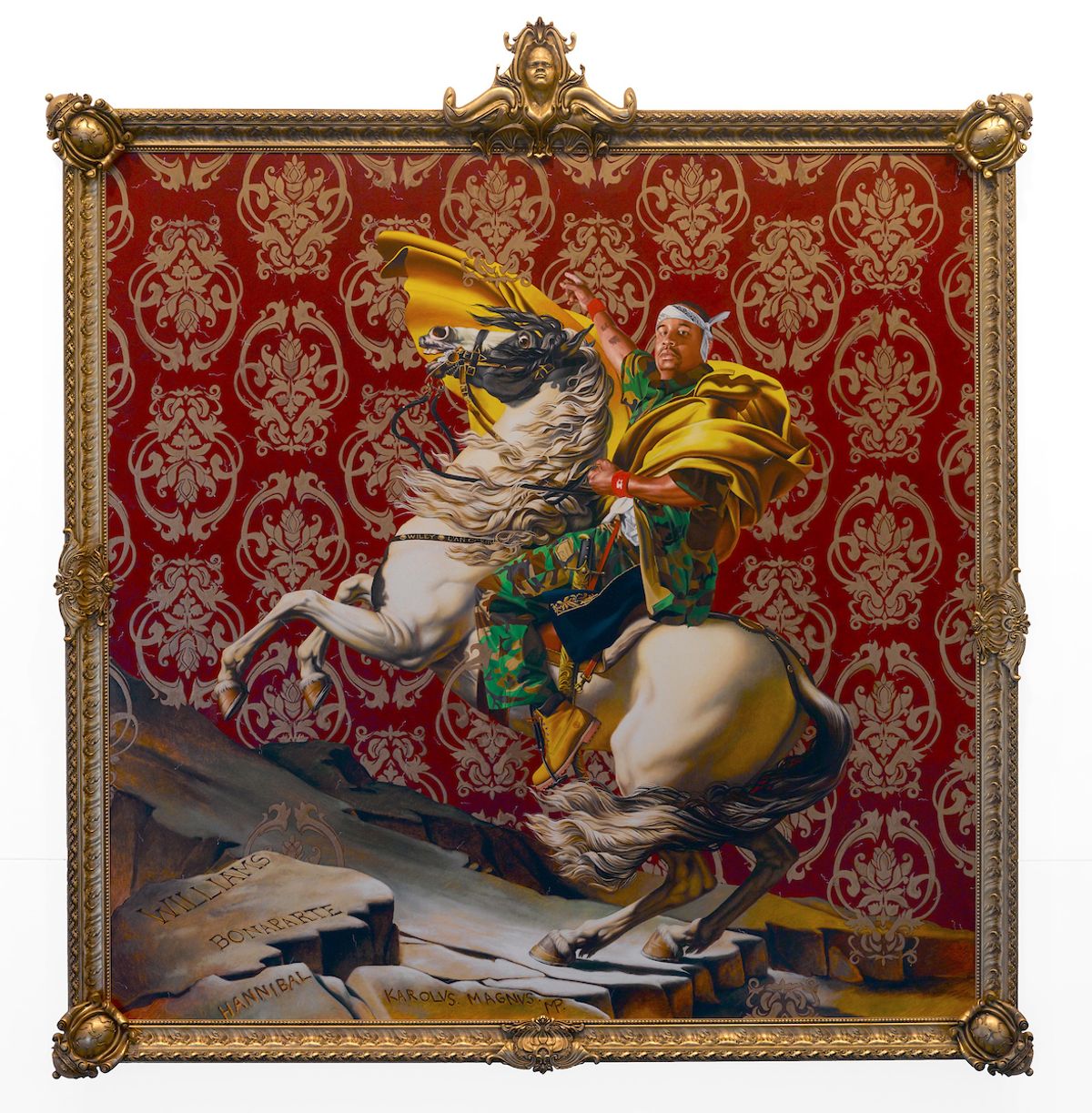Jacques-Louis David Meets Kehinde Wiley at the Brooklyn Museum (until 10 May) presents the unprecedented pairing of two magisterial paintings. Jacques-Louis David’s Bonaparte Crossing the Alps (1800-01)—a celebrated portrait of Napoleon Bonaparte on horseback—is juxtaposed with Wiley’s dramatic homage to the 19th century work, Napoleon Leading the Army Over the Alps (2005). David’s portrait, commissioned by the king of Spain, Charles IV, in 1800, reflects Napoleon’s victory over Austrian forces in June 1800 at the Battle of Marengo in Piedmont, reinforcing his grip on power across his European empire. Wiley’s work, which was acquired by the museum in 2015, when it was shown in the artist’s retrospective A New Republic, replaces the figure of Napoleon with a black man wearing a bandana and Timberland boots; it belongs to a series of portraits inspired by the history of equestrian portraiture entitled Rumors of War. In a previous interview, Wiley told The Art Newspaper that “art has been the witness to power, whether it’s church or the state. The issue [of power] is tricky and bolder today, it’s vulgar. It is about focusing on truth and reconciliation, and balancing the past and the present in some strange way.” The works were first shown together last year at the Château de Malmaison, the former residence of Bonaparte and his wife Joséphine. In the Brooklyn Museum’s exhibition, the paintings are complemented by a series of works by Wiley that critique the history of power in works of art, as well as historical and satirical depictions of Bonaparte.
Luhring Augustine is going very old school as it opens Gothic Spirit: Medieval Art from Europe this week (until 7 March). The collaborative exhibition with the London-based medieval and Renaissance art dealer Sam Fogg presents 30 works of medieval art viewed through a more contemporary lens. For example, a large stained glass window dating to a 16th-century German church features two female saints; kneeling before them is a well-heeled lady—the commissioner of the work and a rare but important example of a female patron during that era. Also on view are two monumental Romanesque marble lions supporting eight ft-tall columns on their backs, believed to have been carved at the beginning of the 13th century for the Cathedral of Reggio Emilia in Italy; their counterparts can be seen at The Met Cloisters. In honour of the collaboration—the second the galleries have undertaken together—the dealers have organised a free and open-to-the-pubic conference at the School of Visual Art on 25 January that will deal with the restoration and preservation of Medieval art and architecture, inspired by issues facing the restoration of Paris’s Notre Dame cathedral.
It’s the last week to see Artist in Exile: The Visual Diary of Baroness Hyde de Neuville at the New-York Historical Society (until 26 January). The show, which brings together more than 100 watercolours, drawings and other works, is the first thorough examination of the French artist and society figure Anne Marguérite Joséphine Henriette Rouillé de Marigny, Baroness Hyde de Neuville. Decades ahead of her time, the artist grabbed life by the horns, enthusiastically sketching landscapes and people as an exile and outsider in America. She and her husband visited a range of towns in upstate New York as well as Native American settlements. The Neuvilles were also instrumental in establishing a bilingual Economical School in New York for French and Caribbean immigrants and for adults and children who could not afford an education; the artist executed a series of sketches of its students. Captivated by urban and rural landscapes, the baroness roamed the city and countryside recording buildings, streets and bridges that no longer survive, creating a crucial record of a burgeoning republic’s early days.


